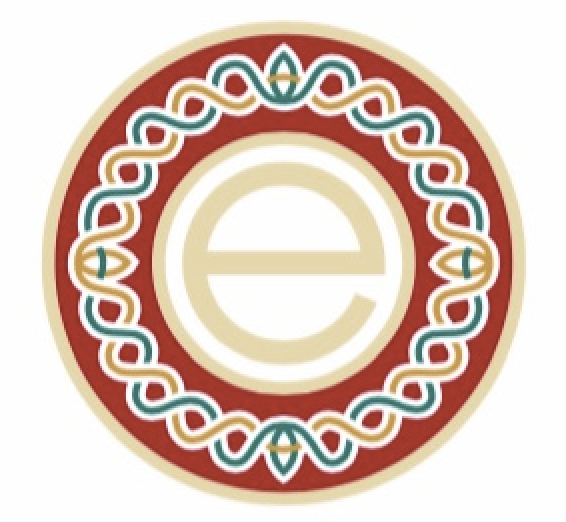64 results
-


Zürich. Braginsky Collection, B251

- Collection
- e-codices
- Library
- Zürich. Braginsky Collection
- Date
- 14th century, 15th century, [14th/15th century]
- Language
- Hebrew
-
Abulafia, Abraham ben Samuel (attributed to)
-
kabbalist Abraham Abulafia (1240- after 1291) advocated a concept of Kabbalah that had little or nothing to
-


Zürich. Braginsky Collection, K49

- Collection
- e-codices
- Library
- Zürich. Braginsky Collection
- Date
- 17th century, 1675
- Language
- Hebrew
-
son of the deceased Isaak Katzighin, the bridal couple named in this marriage contract, both belonged to
-


Zürich. Braginsky Collection, B125

- Collection
- e-codices
- Library
- Zürich. Braginsky Collection
- Date
- 15th century, [around 1470]
- Language
- Hebrew, Yiddish
-
Attributed to Hippocrates
-
Hippocrates in the Hebrew translation of Hillel ben Samuel of Verona (ca. 1220 – ca. 1295); in contrast to
-


Genève. Bibliothèque de Genève, Ms. heb. 10

- Collection
- e-codices
- Library
- Genève. Bibliothèque de Genève
- Date
- 14th century
- Language
- Hebrew
-
Ibn Ezra, Abraham ben Meïr (attributed to)
-
Abraham Ibn Ezra (ca. 1092-1167), the treatise She'elot Tiviot (Problemata Physica) attributed to Pseudo-Aristotle
-


Zürich. Braginsky Collection, B253

- Collection
- e-codices
- Library
- Zürich. Braginsky Collection
- Date
- 14th century, 15th century, [around 1400]
- Language
- Hebrew
-
In addition, it contains the entire text of the Haggadah, which at this time already tended to be copied
-


Zürich. Braginsky Collection, B57

- Collection
- e-codices
- Library
- Zürich. Braginsky Collection
- Date
- 17th century, between 1673 and 1683
- Language
- Hebrew
-
Safed (Upper
Galilee), the mystical aspect of prayer, as “the vehicle of the soul's
mystical ascent to
-


Zürich. Braginsky Collection, B49

- Collection
- e-codices
- Library
- Zürich. Braginsky Collection
- Date
- 16th century, 15th century, [ca. 1500]
- Language
- Hebrew
-
Siddur according to the Italian Rite (Nussah Roma)
-


Zürich. Braginsky Collection, B93

- Collection
- e-codices
- Library
- Zürich. Braginsky Collection
- Date
- 14th century, [second half of the 14th century (around 1391?)]
- Language
- Hebrew
-
Ibn Ezra, Abraham ben Meïr (attributed to)
-


Zürich. Braginsky Collection, B45

- Collection
- e-codices
- Library
- Zürich. Braginsky Collection
- Date
- 17th century, before 1611
- Language
- Hebrew
-
Shelomo bar Joshua Adeni (1567-1625) was a Jewish scholar who devoted himself primarily to the study
-


Basel. Pharmazie-Historisches Museum der Universität Basel, Cod. V1895

- Collection
- e-codices
- Library
- Basel. Pharmazie-Historisches Museum der Universität Basel
- Date
- 17th century, ca. 1612-1630
- Language
- Ancient Greek, French, Latin, Hebrew, German
-
It contains mostly Hebrew, ancient Greek, French and Latin sayings by various authors, addressed to Ryhiner
-


Zürich. Zentralbibliothek, Ms. D 74

- Collection
- e-codices
- Library
- Zürich. Zentralbibliothek
- Date
- 17th century, 1633
- Language
- Latin, Hebrew
-
to his Fratres juniores (monks in the period between their entry to the cloister/profession of vocation
-


Zürich. Braginsky Collection, B235

- Collection
- e-codices
- Library
- Zürich. Braginsky Collection
- Date
- 18th century, 1730
- Language
- Yiddish, Hebrew
-
This gave rise to the name Yom Kippur Katan ("Minor Day of Atonement").
-


Zürich. Braginsky Collection, K29

- Collection
- e-codices
- Library
- Zürich. Braginsky Collection
- Date
- 18th century, 1789
- Language
- Hebrew
-
The main episode at top center, depicts the prophet Elijah ascending to heaven, riding in his fiery horse-drawn
-


Zürich. Braginsky Collection, S12

- Collection
- e-codices
- Library
- Zürich. Braginsky Collection
- Date
- 18th century, around 1775
- Language
- Hebrew
-
Italy associated twisted columns with those of the Temple of Solomon, which they believed were brought to
-


Zürich. Braginsky Collection, B217

- Collection
- e-codices
- Library
- Zürich. Braginsky Collection
- Date
- 18th century, 1751
- Language
- Hebrew
-
In addition to the Seder Birkat ha-Mazon ("Grace after Meals"), this mid-18th century manuscript contains
-


Zürich. Braginsky Collection, B52

- Collection
- e-codices
- Library
- Zürich. Braginsky Collection
- Date
- 18th century, 1750
- Language
- Hebrew
-
The prophet Elijah, who will come in order to announce the advent of the Messiah, is considered to be
-


Zürich. Braginsky Collection, B67

- Collection
- e-codices
- Library
- Zürich. Braginsky Collection
- Date
- 18th century, [around 1720]
- Language
- Hebrew
-
This manuscript is of great significance due to a cycle of sixty full-page illustrations from the Book
-


Zürich. Braginsky Collection, S54

- Collection
- e-codices
- Library
- Zürich. Braginsky Collection
- Date
- 18th century, [ca. 1740]
- Language
- Hebrew
-
This scroll contains one of the most finely executed series of illustrations to be found in decorated
-


Zürich. Braginsky Collection, B173

- Collection
- e-codices
- Library
- Zürich. Braginsky Collection
- Date
- 18th century, 1716
- Language
- Hebrew
-
commentary] "Golden Scepter"; based on the style and script of the scribe (Sofer), it can be attributed to
-


St. Gallen. Stiftsbibliothek, Cod. Sang. 1480

- Collection
- e-codices
- Library
- St. Gallen. Stiftsbibliothek
- Date
- 18th century, 1739
- Language
- Latin, Greek, Hebrew
-
It was presented to the abbott in 1739 on the occasion of his name day by the students of the monastery
- Please select items from search results or item pages.








































